For most of the past decade, Cellport Systems has been researching and developing a safer way for motorists to talk on their wireless phones while on the road.
Sure, there are headsets and other devices on the market that allow people to talk and keep both hands on the wheel, but critics say that those, too, can pose safety problems.
Now, as public sentiment grows against the use of hand-held cellular phones while driving, Cellport finds itself in the spotlight with its next generation of hands-free, headset-free technology.
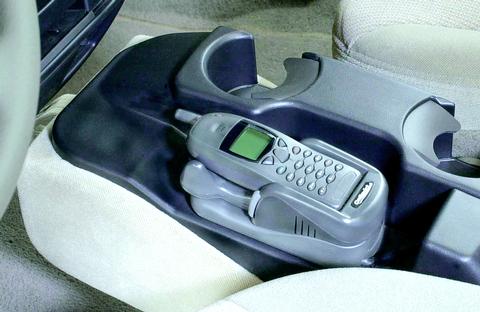
PHOTO: NY TIMES
Drivers use simple voice commands to operate the phone, while the sound is channeled through the car's speakers. And Cellport's system is compatible with most major brands of cell phones.
Last month, Cellport, which is privately held, signed a US$48 million, two-year contract to provide its voice-activated cell phone system, known as the Cellport 3000 with Voice Command, to the Ford Motor Co.
Ford will offer the option through dealers this fall in the Ford Taurus and Mercury Sable sedans and the Ford Windstar minivan, and early next year in the Lincoln Town Car.
Aligning stars
"So the stars aligned, and thank God we lived long enough to see them align," said Pat Kennedy, the chief executive and a founder of Cellport. "We were, oddly enough, way ahead of our time."
Kennedy, 48, uses phrases like "so one thing led to another" and words like "magically" to describe the business connections that led to seven patents, global partners and the contract with Ford.
Kennedy has always been drawn to the telecommunications industry even though he received a degree in international economics from the University of Buffalo. Just out of college in 1978, he began working for Hatfield Associates, a telecommunications consulting firm in Boulder, then started Cellular Solutions Inc, a cell phone accessories business. He and his former boss, Dale N. Hatfield, worked together again in the early 1990s, along with three other colleagues in the industry -- Hiroshi Sakurai, Michael Braitberg and Richard Chandler -- to eventually form Cellport. Before Cellport was founded in 1993, the partners began developing and patenting their wireless technology.
In their first year of business, Cellport's founders lived rather modestly, driving old cars and eating plenty of pizza for dinner. Their fortunes began to change later that year, when a phone company industry group agreed to provide US$500,000 to finance research.
That money kept the company going until 1995, when AT&T Wireless provided a cash infusion of US$2 million. In exchange for financing, Cellport agreed to share research results and to allow John Thompson, then the chief financial officer at AT&T Wireless, to serve on its board. Thompson helped Cellport secure more than US$3 million in additional financing from other industry sources.
But the streak of good news came to an abrupt end in 1998, when the company presented its first product to investors and received a lukewarm reception. "They said, `kudos because your core concept of universality is spot on, but it's a little big and clumsy,'" Kennedy said. Soon after, Braitberg left the company, although he remains a stockholder.
FLV Fund, an investment firm based in Belgium, helped Cellport back on its feet in 1999 with a US$7 million investment. Philippe Vercruyssen, senior investment manager at FLV Management USA, a subsidiary, now also serves on Cellport's board. But Cellport's biggest break came last year, when it received a US$22 million investment from Cisco Systems. That enabled the company to add offices in Tokyo and Detroit and to expand its work force to 100, from 27 just a year ago.
Dressed casually on a recent Wednesday morning in a brightly colored shirt, khaki shorts and black loafers, Kennedy offered a demonstration of the Cellport 3000.
As he drove through the office parking lot in Boulder, he kept both hands on the steering wheel and his eyes on the road as he "dialed" the phone with spoken commands.
He then repeated the process with several different cell phone models, rapidly attaching and detaching them from pocket adapters that fit a phone into the system's cradle, known as the docking station. The phone sits snugly in the cradle, where the phone battery is also recharged, and will not become a flying object if there is a sudden stop, he said.
Rear-view microphone
The Cellport kit is wired to the car's electrical system. It has a small microphone, mounted on the rear-view mirror, that can be wired through the stereo speakers and is intended to pick up even soft voices. It is activated only when the user says, "Cellport, dial" in English. The system, which can be programmed for speed dialing, cannot be activated accidentally by singing along with the radio, for example, though loud noises like those from a nearby lawnmower or from screaming children in the back seat of the car could interrupt an outgoing call.
"Then you've got a user-functionality problem," Kennedy said.
Incoming calls mute the car's audio system, and an external antenna improves signal strength and reduces the problem of dropped calls.
While other companies -- most notably Motorola and Nokia -- already have relationships with Mercedes-Benz, Jaguar and BMW to provide voice-activated phone systems as dealer options, Cellport's advantage is the near universality of the pocket adapters. Cellport said it had designed them to accommodate 70 percent of cell phones on the market.
The Cellport 3000 system sells for around US$250 at retail outlets, although installation could run an additional US$100 to US$200 and individual adapters costs US$60 to US$100.
Kennedy said his company was constantly updating software as new cell phones were created. "Even though it looks like a hardware appliance company, the reality is we're really a software company," he said.
This year, Cellport says it expects to earn a profit of US$4 million to US$5 million, compared with barely break-even results in previous years. Earnings could grow as the market for hand-held alternatives increases. About 15 million hands-free phone units are expected to be sold next year worldwide, generating US$3 billion in revenue, according to Cellport. The company said it had sold almost 20,000 of its hands-free units this year.
Douglas M. Daniels, Cellport's vice president for business development, who helped sell the product to Ford, said: "It's the simple stuff in life that sells, and it's just inevitable that universal hands-free is going to become as common as the cup holder."
Customer demand
Daniels said a large fleet customer of Ford, which neither Cellport nor the automaker would identify, had approached Ford with a problem: It had a hands-free policy for all company cars. "Our main motivation was customer demand," said Kurt Kaiser, North American manager for vehicle personalization at Ford.
Ford officials said they were unsure of the exact price of the Cellport option for customers, although Daniels said it would probably be under US$400 on most cars. The kit can also be retrofitted to many older-model Fords.
Cellport began manufacturing under contract in Mexico at the start of the year and the deal with Ford began to take shape this spring. "It was catalyzed in a sense of crisis by the New York state law," Kennedy said.
This summer, New York became the first state to enact a law banning motorists from using hand-held cell phones while driving. It takes effect on Nov. 1.
Other states may follow suit. Since 1995, legislators in at least 45 states have proposed banning or restricting the use of cell phones while driving, according to the National Conference of State Legislatures. More than 300 cities and towns also have laws prohibiting the practice, along with 20 countries worldwide.
A New England Journal of Medicine study in 1997 concluded that phone use in a motor vehicle quadrupled the risk of an accident. An estimated 3 percent of drivers nationwide use hand-held phones, according to the National Highway Traffic Safety Administration.
While he was impressed with the Cellport technology, Felix W. Ortiz, a New York state assemblyman who spent years advocating legislation to prohibit drivers from using hand-held cell phones, said he did not think that the company's product solved the safety issues. "People should not be driving and talking at all," said Ortiz, a Brooklyn Democrat.
Bill Johnston, a psychology professor at the University of Utah who has studied how cell phones affect driving performance, agreed. "It's like a filter tip on a cigarette in that it might help a little bit," he said. "The problem is diversion from driving, just the conversation itself."
Kennedy said he was not lobbying to ban hand-held phones in cars. "We take the position with the cellular industry that, yes, consumers need to be responsible for their own behavior," he said.
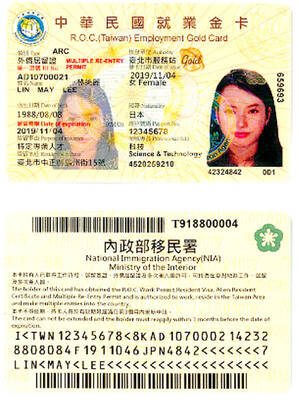
GAINING STEAM: The scheme initially failed to gather much attention, with only 188 cards issued in its first year, but gained popularity amid the COVID-19 pandemic Applications for the Employment Gold Card have increased in the past few years, with the card having been issued to a total of 13,191 people from 101 countries since its introduction in 2018, the National Development Council (NDC) said yesterday. Those who have received the card have included celebrities, such as former NBA star Dwight Howard and Australian-South Korean cheerleader Dahye Lee, the NDC said. The four-in-one Employment Gold Card combines a work permit, resident visa, Alien Resident Certificate (ARC) and re-entry permit. It was first introduced in February 2018 through the Act Governing Recruitment and Employment of Foreign Professionals (外國專業人才延攬及雇用法),
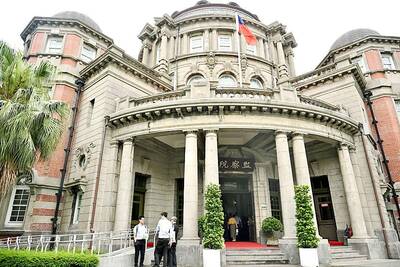
WARNING: From Jan. 1 last year to the end of last month, 89 Taiwanese have gone missing or been detained in China, the MAC said, urging people to carefully consider travel to China Lax enforcement had made virtually moot regulations banning civil servants from making unauthorized visits to China, the Control Yuan said yesterday. Several agencies allowed personnel to travel to China after they submitted explanations for the trip written using artificial intelligence or provided no reason at all, the Control Yuan said in a statement, following an investigation headed by Control Yuan member Lin Wen-cheng (林文程). The probe identified 318 civil servants who traveled to China without permission in the past 10 years, but the true number could be close to 1,000, the Control Yuan said. The public employees investigated were not engaged in national
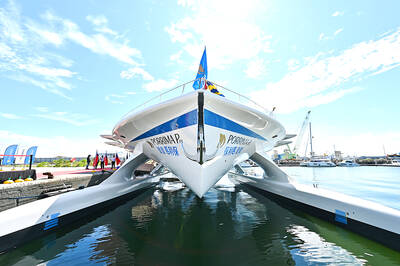
The zero emissions ship Porrima P111 was launched yesterday in Kaohsiung, showcasing the nation’s advancement in green technology, city Mayor Chen Chi-mai (陳其邁) said. The nation last year acquired the Swiss-owned vessel, formerly known as Turanor PlanetSolar, in a bid to boost Taiwan’s technology sector, as well as ecotourism in Palau, Chen said at the ship’s launch ceremony at Singda Harbor. Palauan President Surangel Whipps Jr and Minister of Foreign Affairs Lin Chia-lung (林佳龍) also attended the event. The original vessel was the first solar-powered ship to circumnavigate the globe in a voyage from 2010 to 2012. Taiwan-based Porrima Inc (保利馬) installed upgrades with
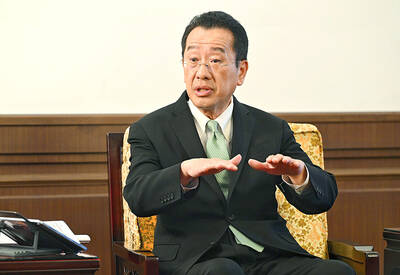
ENHANCE DETERRENCE: Taiwan has to display ‘fierce resolve’ to defend itself for China to understand that the costs of war outweigh potential gains, Koo said Taiwan’s armed forces must reach a high level of combat readiness by 2027 to effectively deter a potential Chinese invasion, Minister of National Defense Wellington Koo (顧立雄) said in an interview with the Chinese-language Liberty Times (sister newspaper of the Taipei Times) published yesterday. His comments came three days after US Secretary of State Marco Rubio told the US Senate that deterring a Chinese attack on Taiwan requires making a conflict “cost more than what it’s worth.” Rubio made the remarks in response to a question about US policy on Taiwan’s defense from Republican Senator John Cornyn, who said that Chinese